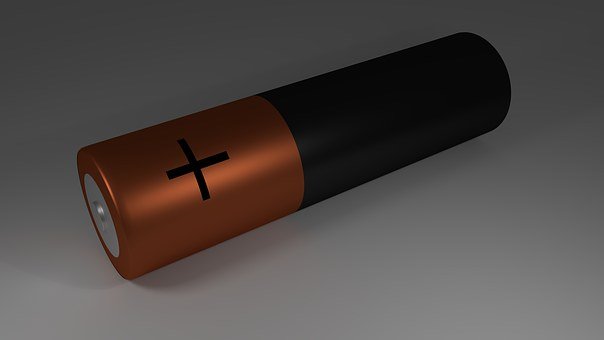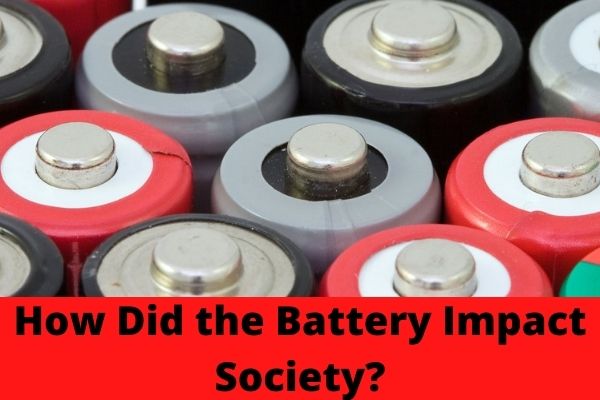Ever wondered how your power door actually works? How can you easily lock and unlock the door with a button?
The power door lock actuator is the hidden maestro. It has an electric motor, a set of gears, and cables.
However, speaking of electronics, you might think, “Can door lock actuator drain battery?”
Yes, it can drain the battery. The auto door controls lock rods which consumes electricity. The battery depletes when the indoor lights are left on longer than usual. If an actuator doesn’t function perfectly, the battery will deplete too. Also, faulty actuator wiring may drain the battery.
That’s for the quickie. In the following sections, I will discuss the whole thing and how it can drain the battery.
Let’s begin.
Understanding The Power Requirement of a Door Lock Actuator
Before we dig deep into the matter, we need to understand the power requirement of the actuator.
An electric motor, gears, and connector, or a retracting cable, are mounted within the door. Electronic controllers in many modern automobiles control the lock actuators.
With a power lock actuator on each door, the doors can be locked or unlocked by rotating the motor in opposite directions.
A standard motor shield cannot supply the 5 to 10 Amperes of current required by the door lock actuator. That’s the typical standard power requirement. However, this may vary from car to car.
![Can Door Lock Actuator Drain Battery? [Facts Explained] 1 Can Door Lock Actuator Drain Battery](https://batterystory.com/wp-content/uploads/2022/11/Can-Door-Lock-Actuator-Drain-Battery.jpg)
Can Door Lock Actuator Drain Battery?
Yes, it can drain the battery. In fact, the actuator has a passive battery drain. The actuator works electromechanically and operates the lock rods. This typically drains 5 to 10 amps. Also, when the door is kept open, if the room light switch is on, the battery will drain.
Moreover, a faulty door lock actuator will likely cause a parasitic drain in the battery. A door lock actuator’s failure can become faulty because of a number of circumstances.
Corrosion is one. The actuator or the mechanical links may become clogged with moisture, grease, dust, and debris over time. This will make the actuator work hard and drain more amperes than normal. This means the battery will drain faster.
How Long Does A Car Door Actuator Take to Drain Battery
A typical car door lock can take anywhere between 5 and 10 amps. However, this may change from car to car. To make a safe assumption, I will take 10 amps as the standard. With this many amps, it will take around 15-24 hours to drain the full battery.
There is also a factor that comes to play, the door lock actuator type. They are of two types, Manual and powered. Below I have compared them both for the two common battery types, AGM type, and gel.
For Manual Door Lock Actuator
Here,
Backup Time = Battery Capacity (in Ah) X Input voltage (V) / Total Load (in Watts)
For example, typical AGM battery backup time= 60x12x120= 86400 sec= 24 hrs
Manual Door lock Actuator | AGM Battery | GEL Battery |
| Around 1 and a Half Day | Around 2 Days | |
The figure will be 1.5x for gel battery as it has a higher capacity.
For Powered Door Lock Actuator
Powered Door Lock Actuator | AGM Battery | GEL Battery |
| 10-12 Hours | 15-24 Hours |
In a similar way, we have calculated how long it will take for AGM batteries to get drained.
What to Do If The Actuator Is Draining Battery Faster Than Usual?
If the actuator is draining the battery faster than usual, there could be a couple of reasons including defective wires, a bad actuator, corrosion, etc. A drained battery may cause serious problems like rough idling. It will require manual troubleshooting. I have discussed the issues individually in the following steps.
Faulty Actuator
You can determine a faulty actuator by simply testing it. If the doors don’t lock or unlock after pushing the button, your actuator may be busted.
In that case, it’s best to talk to a technician and replace it. To do so by yourself, follow these steps;
Step 1: Place The Car
Your car should be parked in a smooth, flat area.
Step 2: Lock The Wheels
Wrap the tires in wheel chocks. To lock the tires and prevent them from moving, apply the parking brake.
Step 3: Install A Nine-Volt Battery Saver
The battery saver must be plugged into the cigarette lighter. By doing so, you’ll keep your computer active and your car’s settings current. But it’s okay if you don’t have a nine-volt battery saver.
Step 4: Remove The Door Lock Actuator Bolts And Lock Screws
Locate and remove the two 10mm bolts that are above and below the actuator. Next, take out the door lock’s three screws.
Step 5: Unplug The Door Lock Actuator
After allowing the actuator to descend, unplug the black electrical connector.
Step 6: Disassemble The Motor
Pry out the metal tabs holding the plastic backing in place with a sharp pry tool. Then, being careful not to harm the brushes, carefully remove the plastic piece from the metal housing.
Step 7: Clean And Reconnect The Actuator
Spray electrical parts cleaning on the brushes to remove any accumulated old grease. To clean the copper drum on the coil shaft, use 1000-grit sandpaper.
Reassemble the motor after applying a little amount of white lithium to the copper components. In order to make a suitable connection, this cleans the electrical contacts.
Step 8: Reattach The Motor
Place the components in the same sequence that you removed them.
Reattach the cover and housing together by applying super glue to the cover. Till the glue dries, keep them joined.
Faulty Wirings
You will need to check the wiring lines as well. The wirings may be at fault for the excessive drain. Check for dust, debris, and clogs. Check the connections as well.
There might be broken connectors or broken cables. Furthermore, follow these steps to make sure everything is okay;
- Examine the power source (power supply or battery). Is your power supply producing 12VDC?
- Examine the wires for connection. Are all of the wires present and undamaged?
- Look for any loose connections. Have you tried detaching and reconnecting cables to see if you can find a loose connection?
- Examine the control box, switch, relay, or motor driver output. Do you have a positive or negative 12VDC signal?
Other Symptoms of A Bad Car Door Actuator
The power door lock function may be disabled by a malfunctioning actuator, which might cause the driver serious discomfort. A broken or malfunctioning power lock has a few indications.
They will alert the driver to a problem that needs to be fixed. They include;
Unusual Noises from The Door
One of the initial signs of a potential power door lock actuator issue is strange noises emanating from inside the door. The majority of power door locks use motors or gears that occasionally whir or create noise as they function. Those sounds are typical.
However, if the sound unexpectedly gets louder or more noticeable, this can be a sign that the motor or gears are getting older. The noises could intensify until the actuators finally stop working.
Erratic Door Lock Behaviour
Door locks that perform irregularly are another sign of a potential issue. Especially, with the power door lock actuators. The actuators may abruptly lock and unlock quickly or operate only sometimes.
This happens if there is some type of internal or electrical problem.
FAQs
What does a power door lock actuator do?
The power door lock actuator is the behind-the-scenes device that locks and releases your vehicle’s doors at the press of a button. It is mounted inside the door and consists of an electric motor, gears, and a linkage, or a cable that stretches or pulls back to operate the lock.
Does leaving the car door unlocked drain the battery?
Yes, it does. When the car doors are unlocked, many autos will perform readiness checks at predetermined intervals. These readiness checks consume battery power And eventually, it ends up draining it.
How long should a door actuator last?
The door lock actuator will, in most situations, endure the lifespan of your vehicle. This is with no servicing or maintenance required on your part. When it does fail, though, it is usually abrupt and unexpected.
Final Words
That will be all on can door lock actuator drain battery. Yes, it can and if it happens, you should move for an inspection asap.
Also, try to wash your door joints and locks to keep the actuator in mint condition.
Have a great day.

